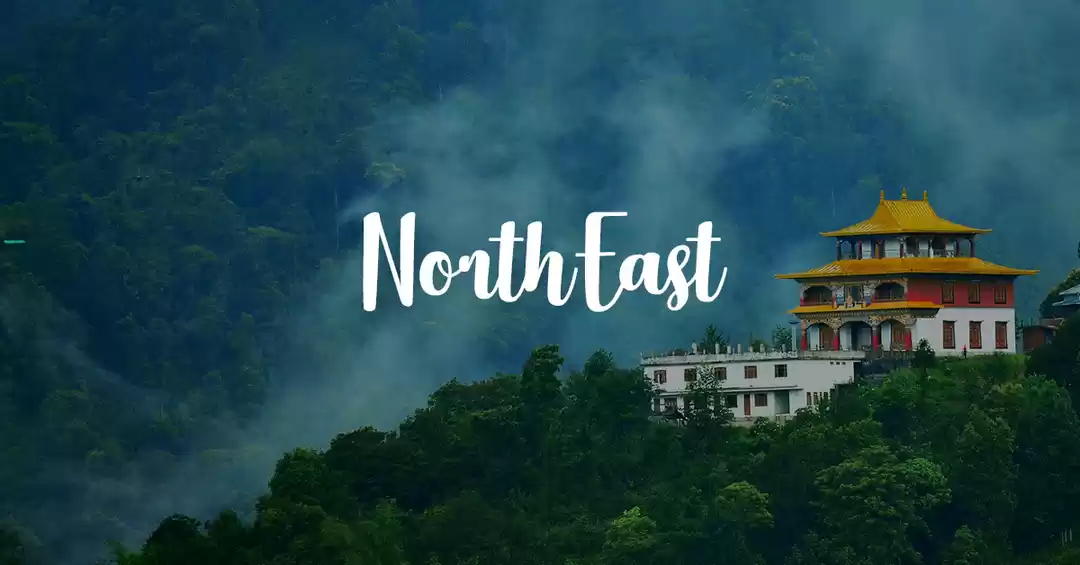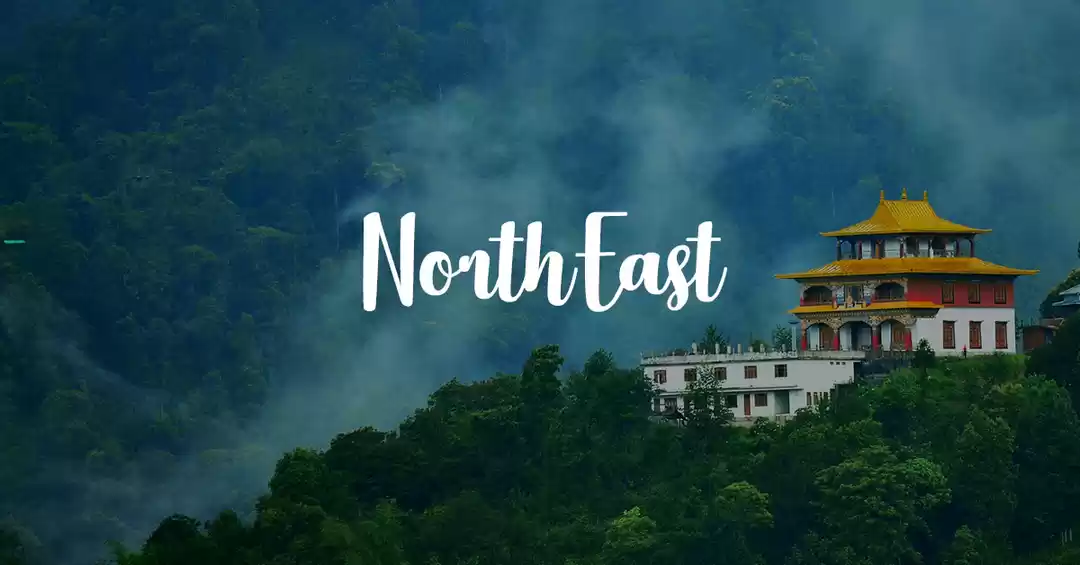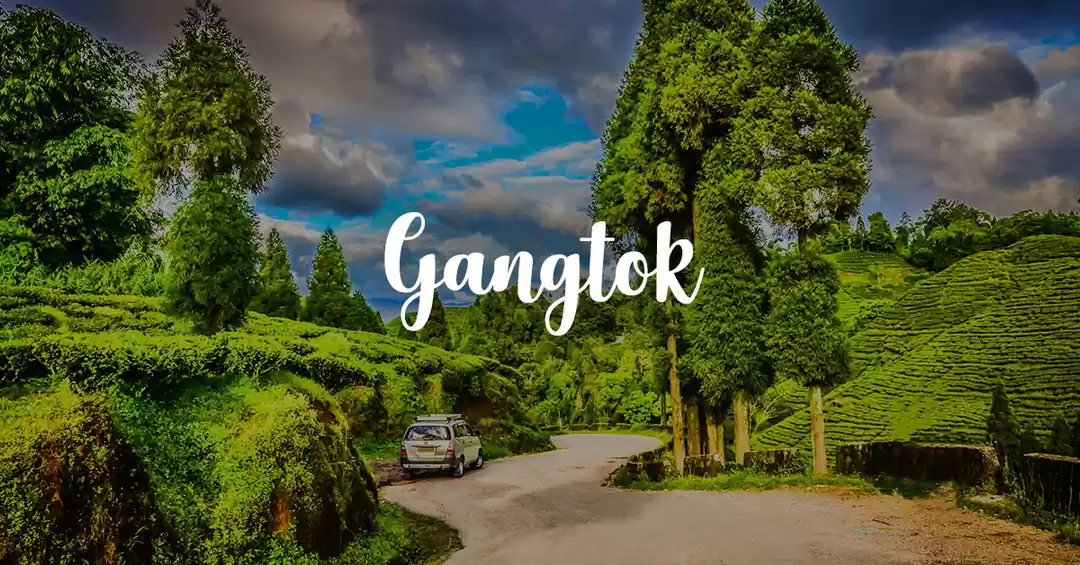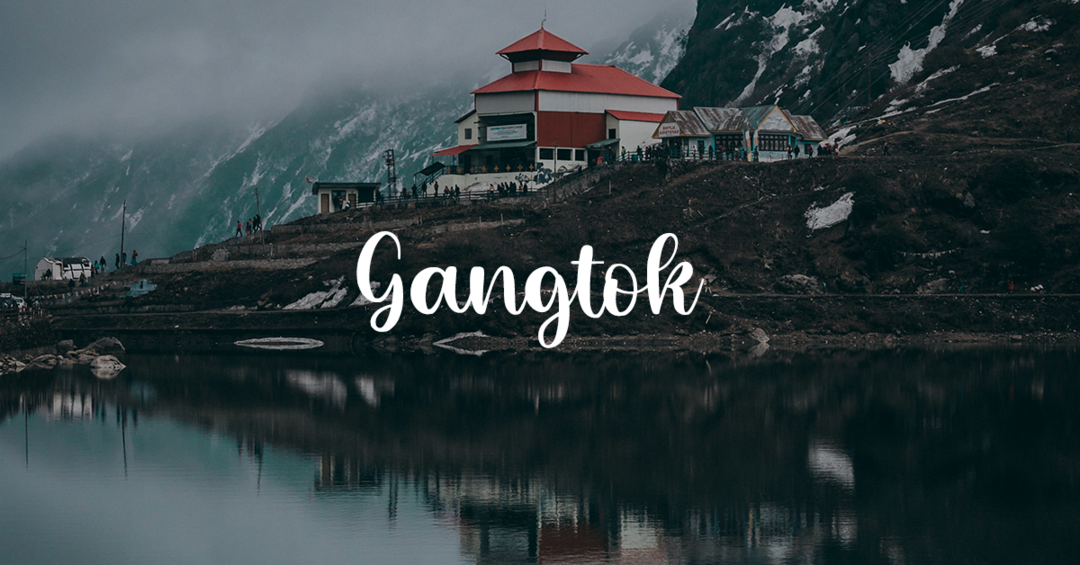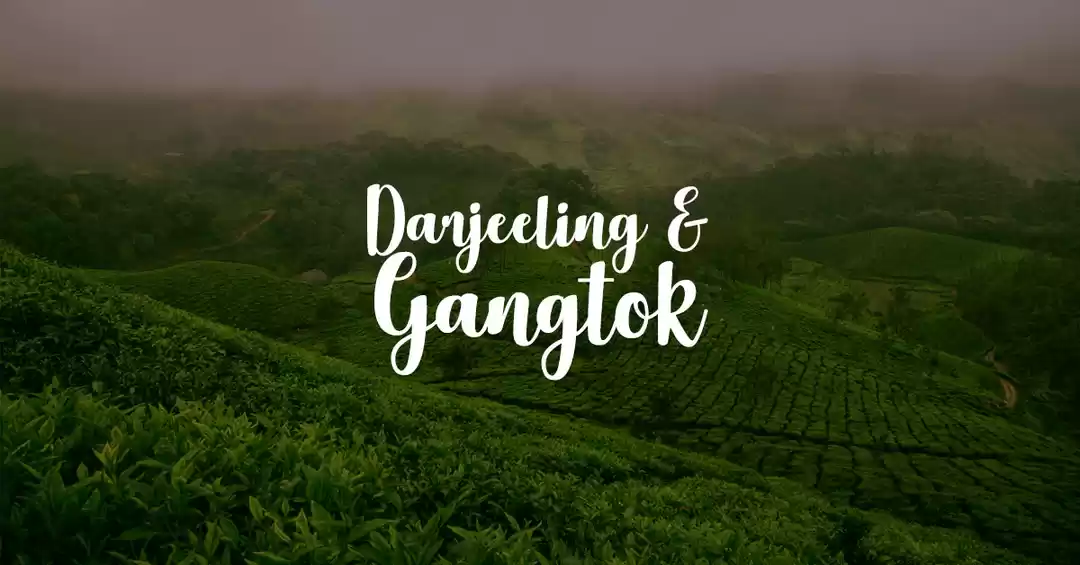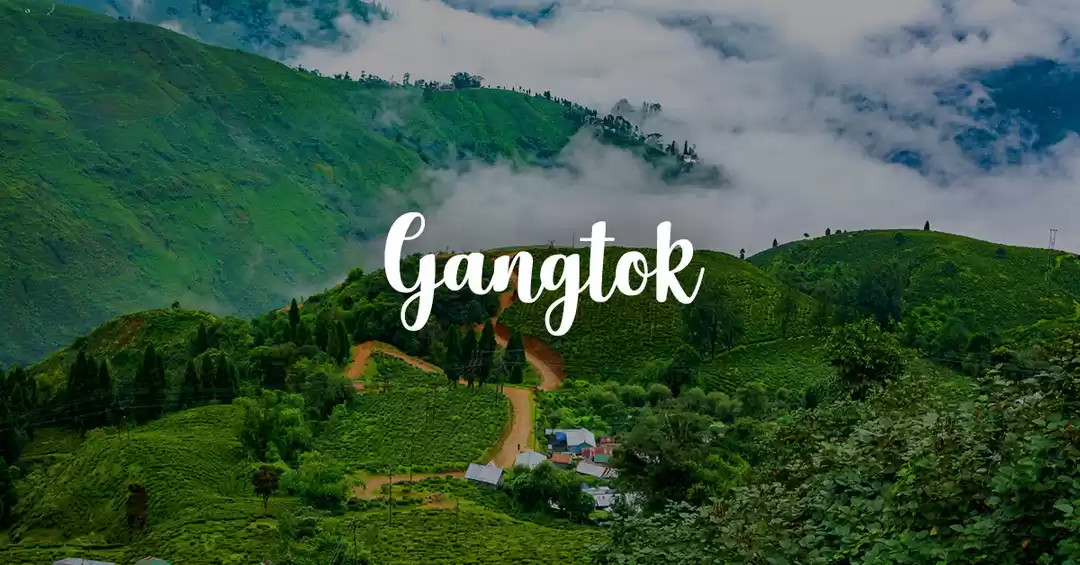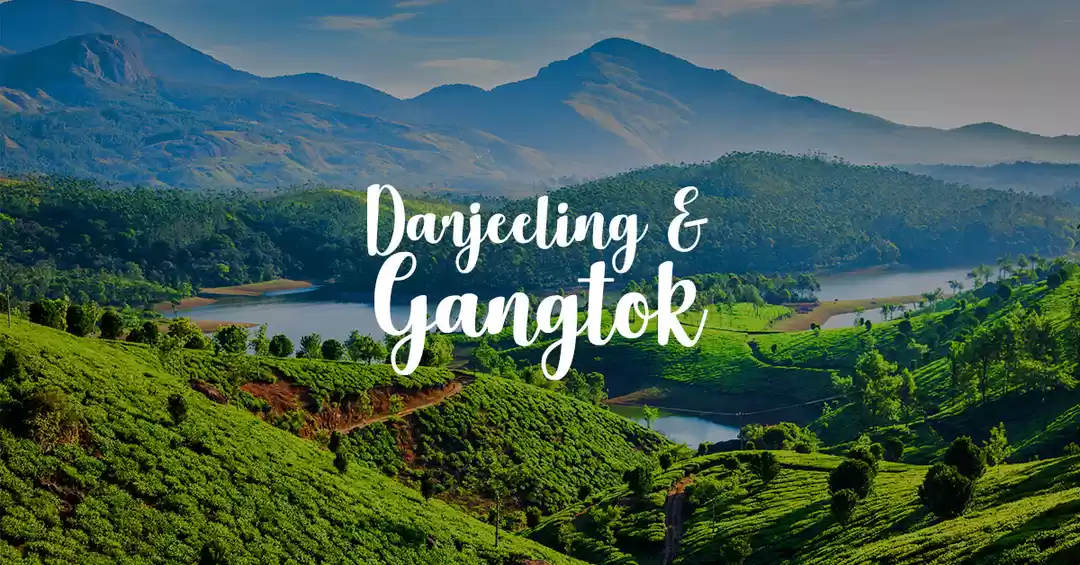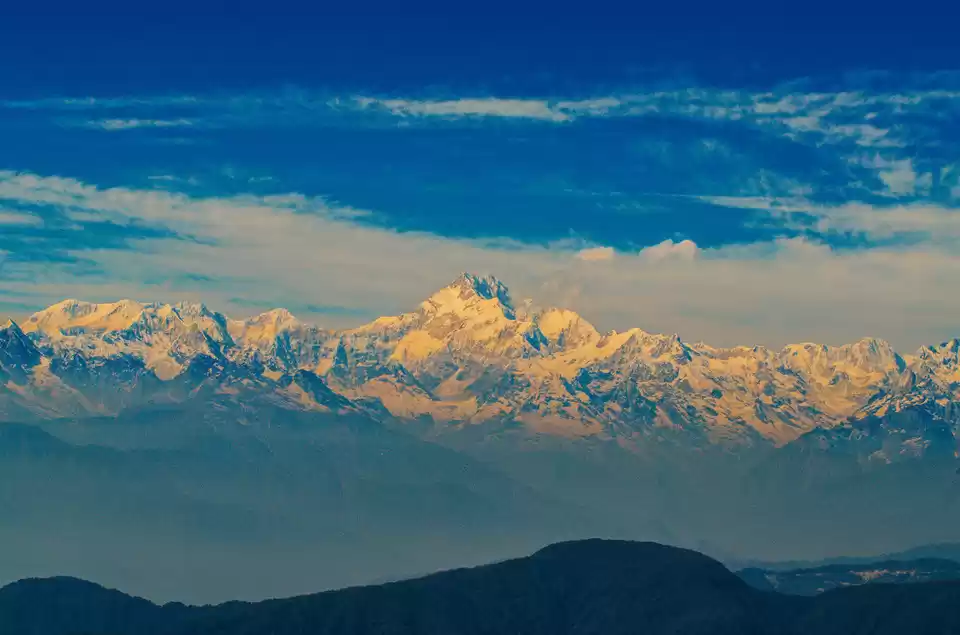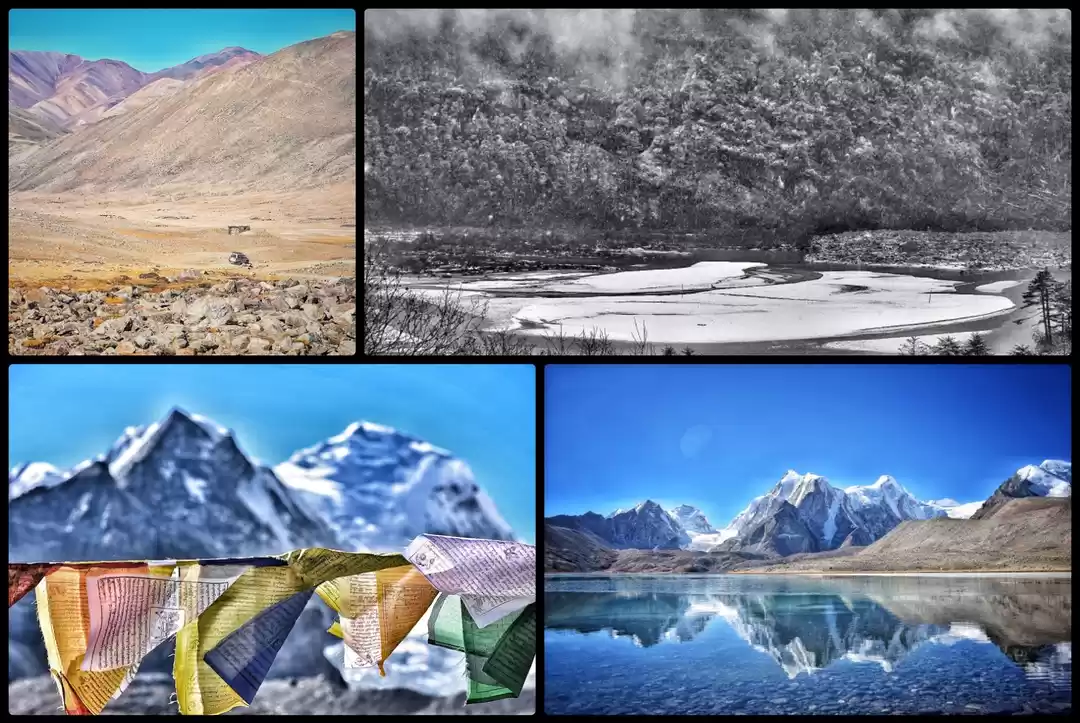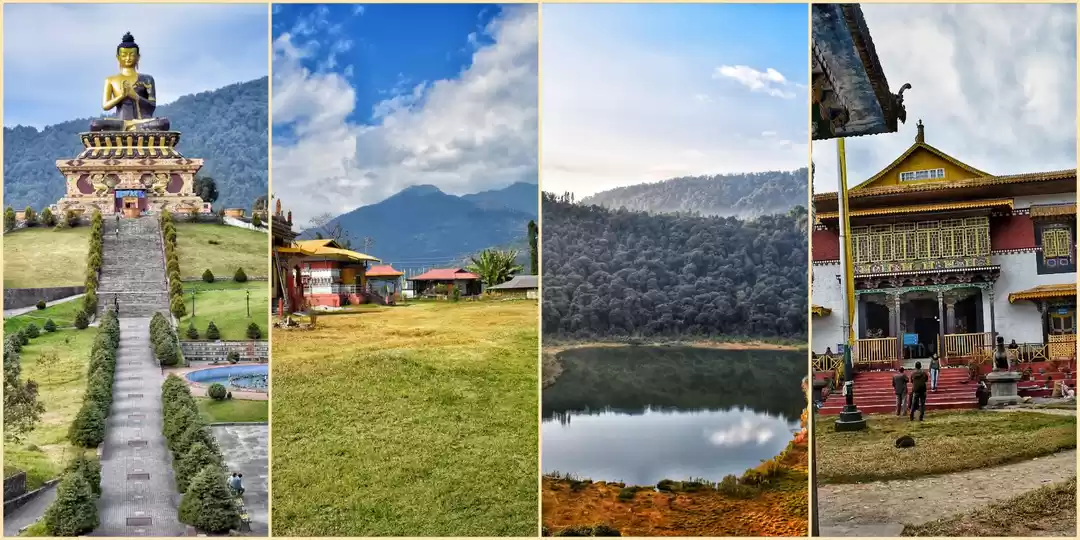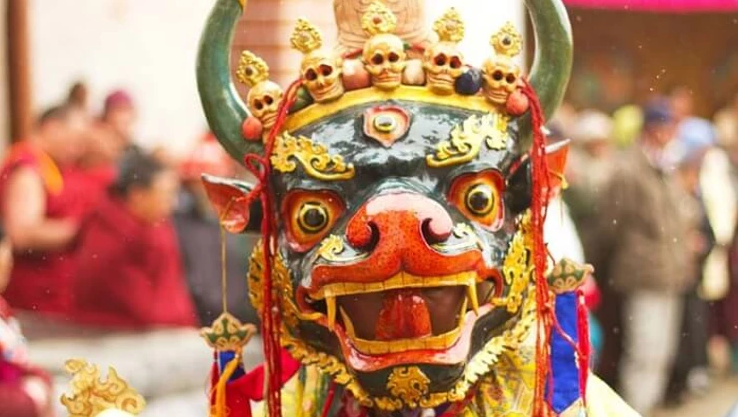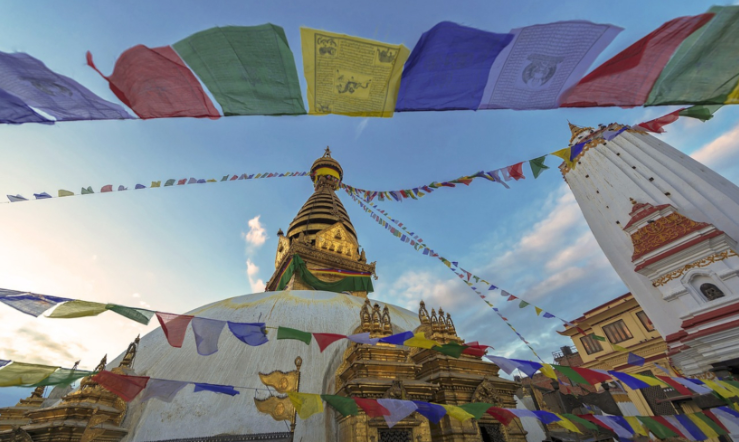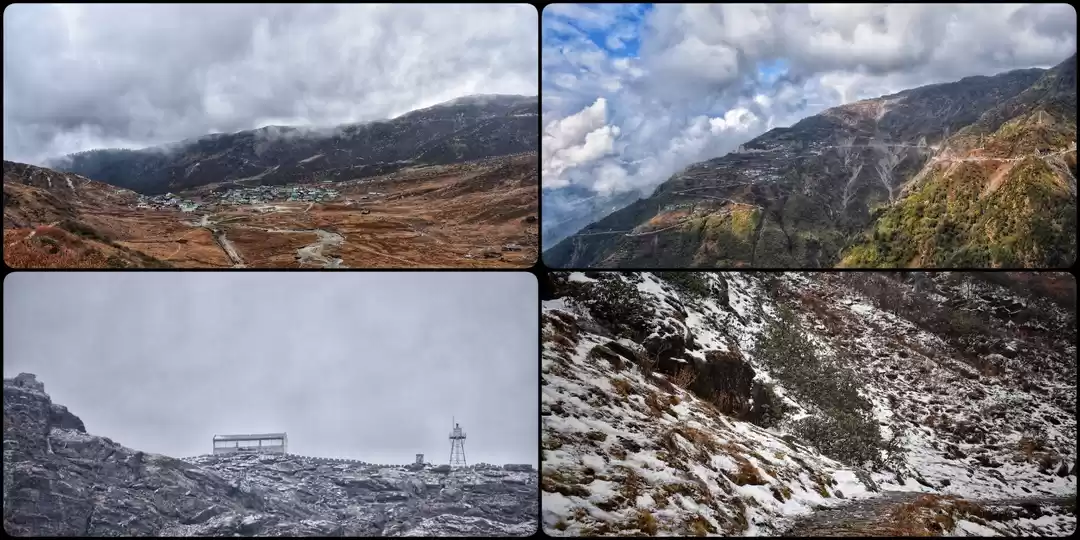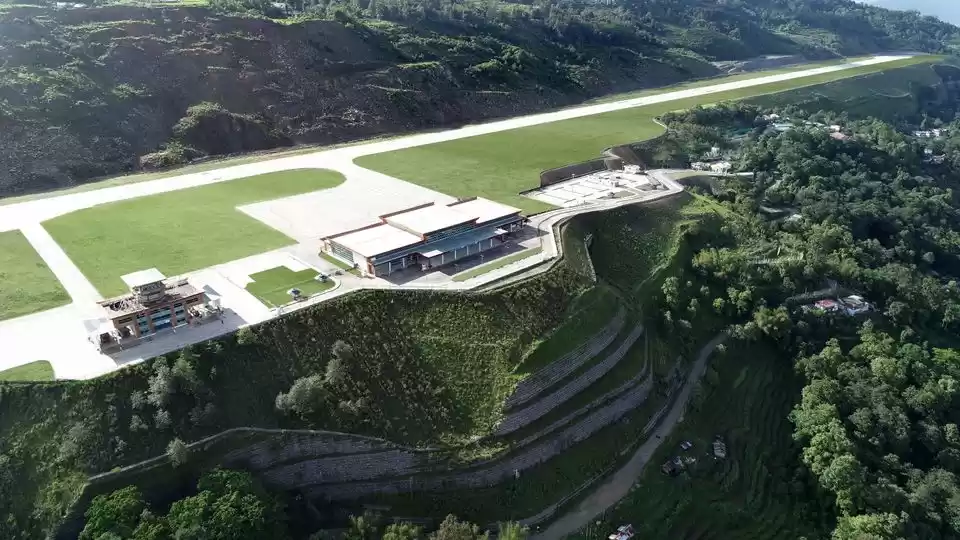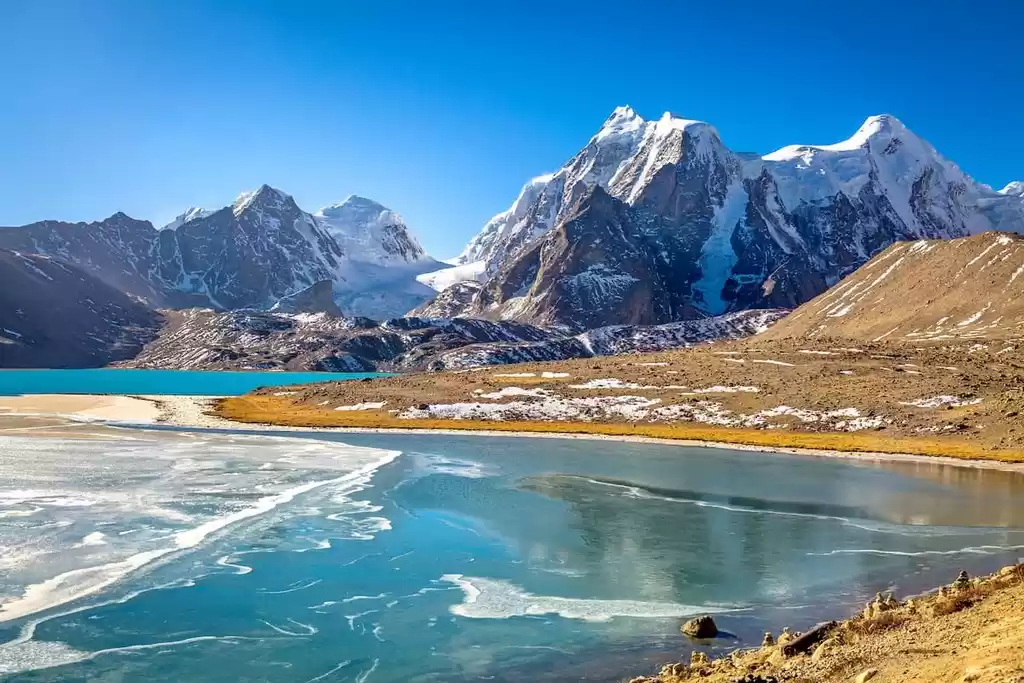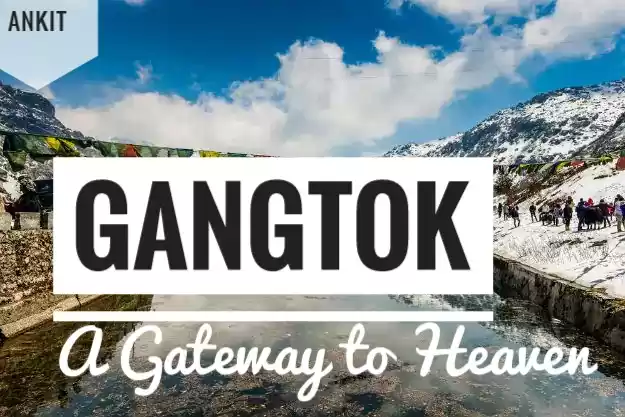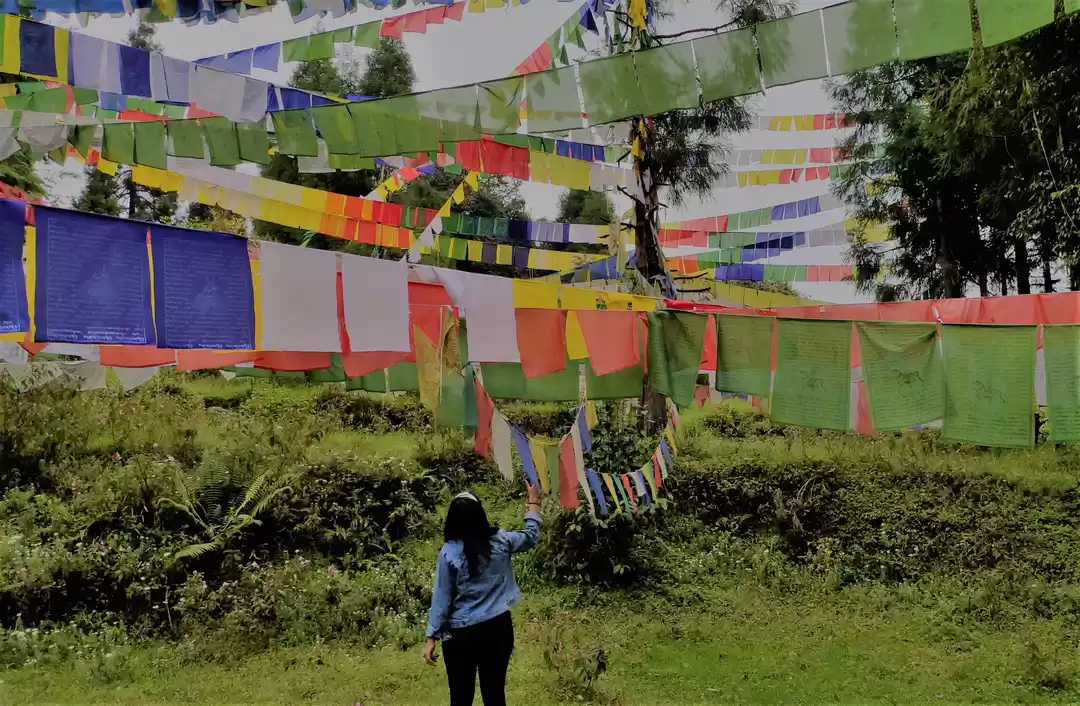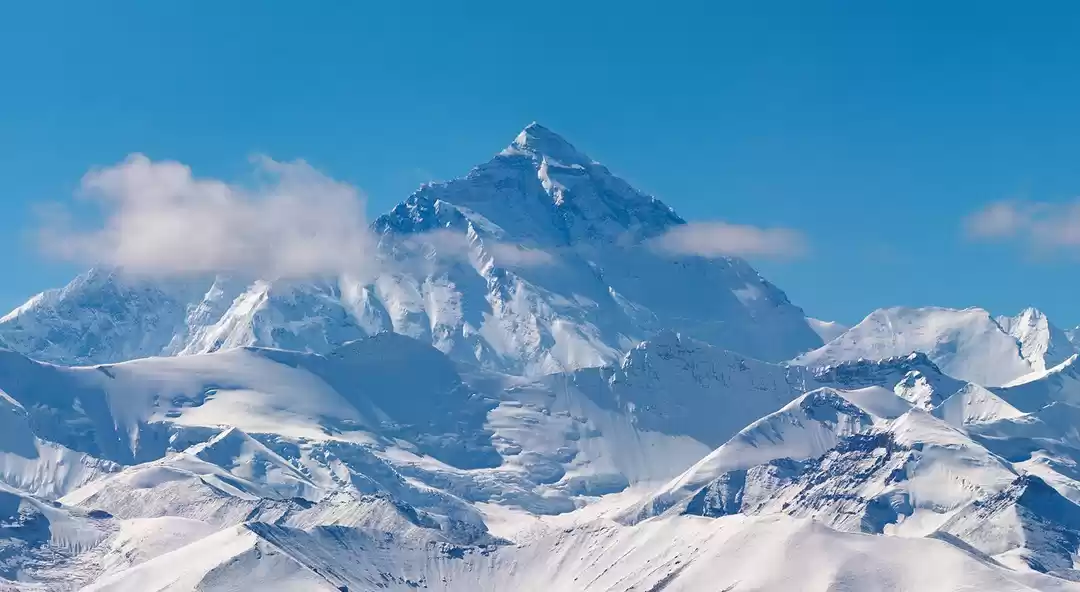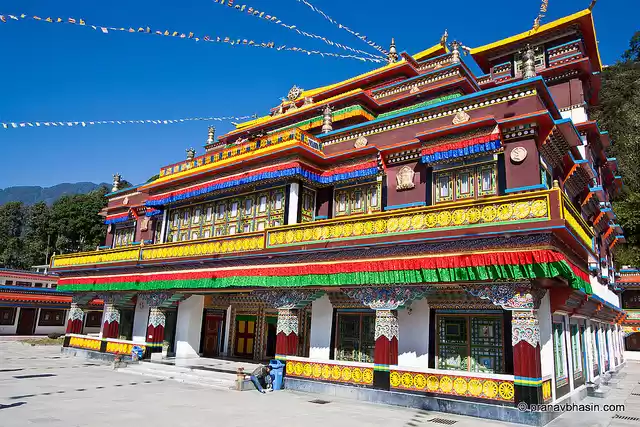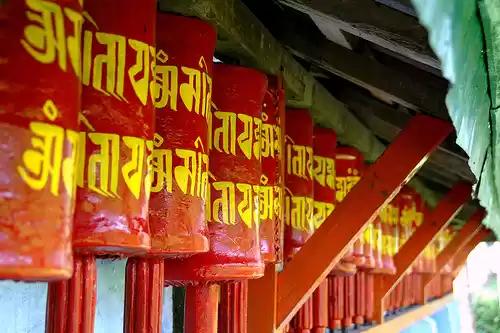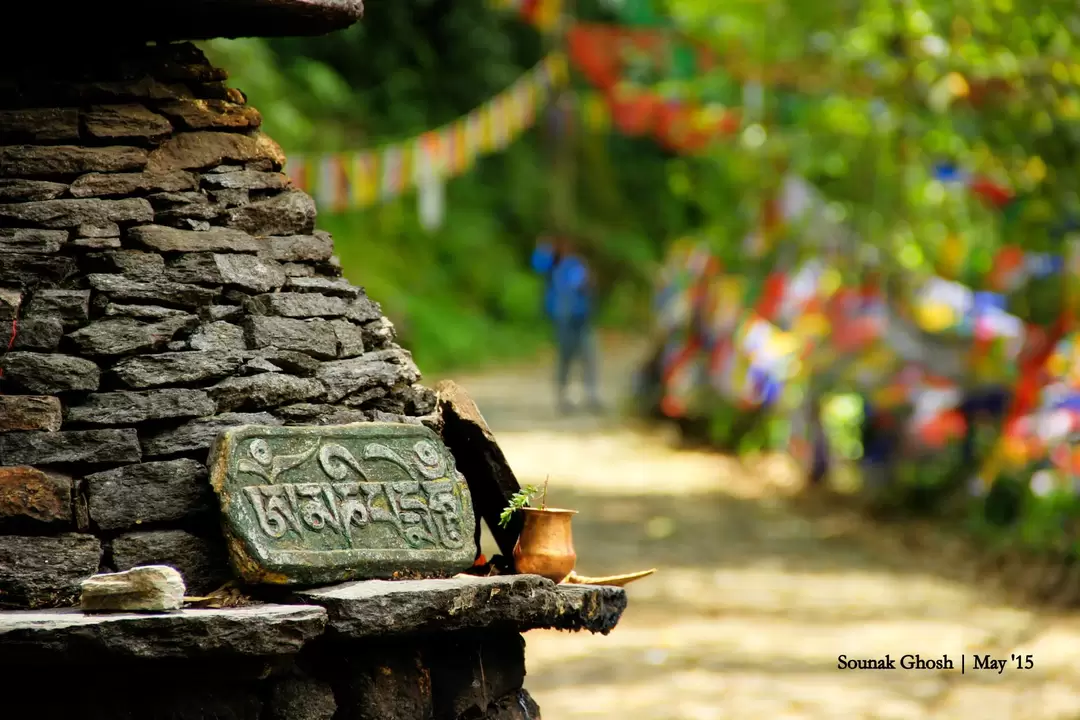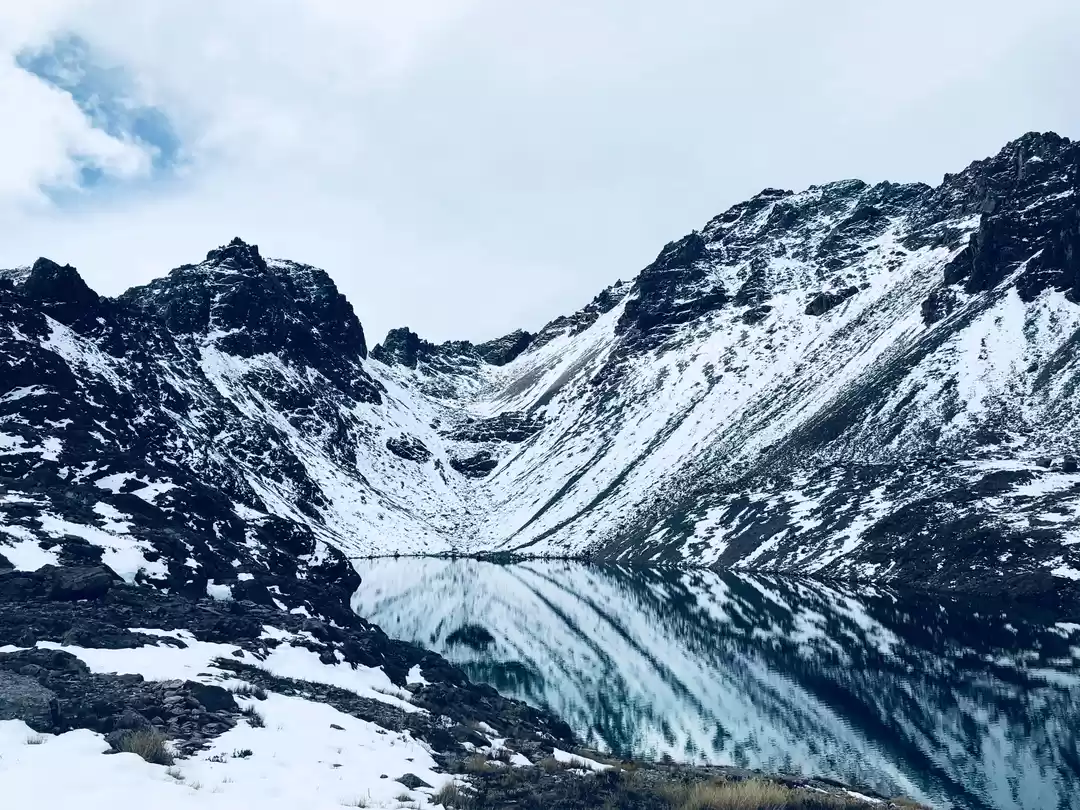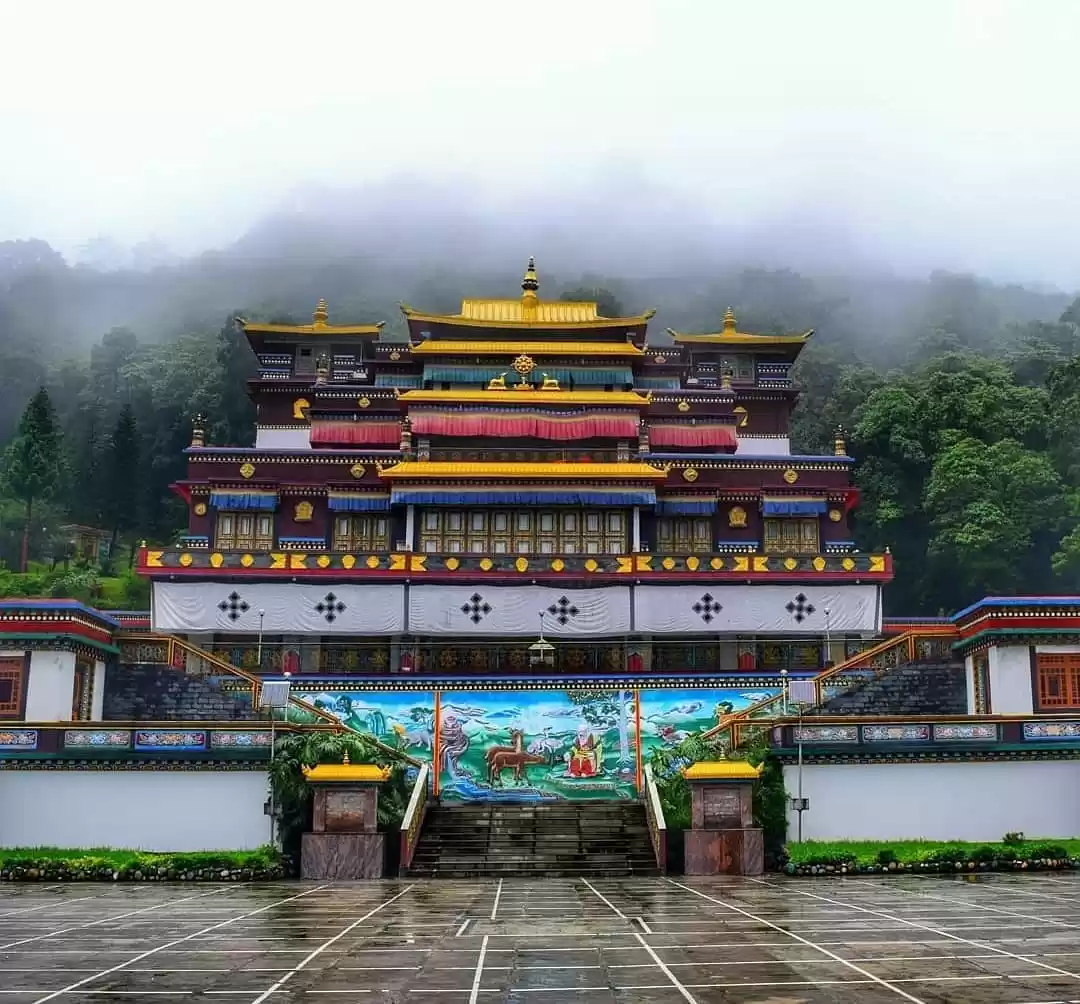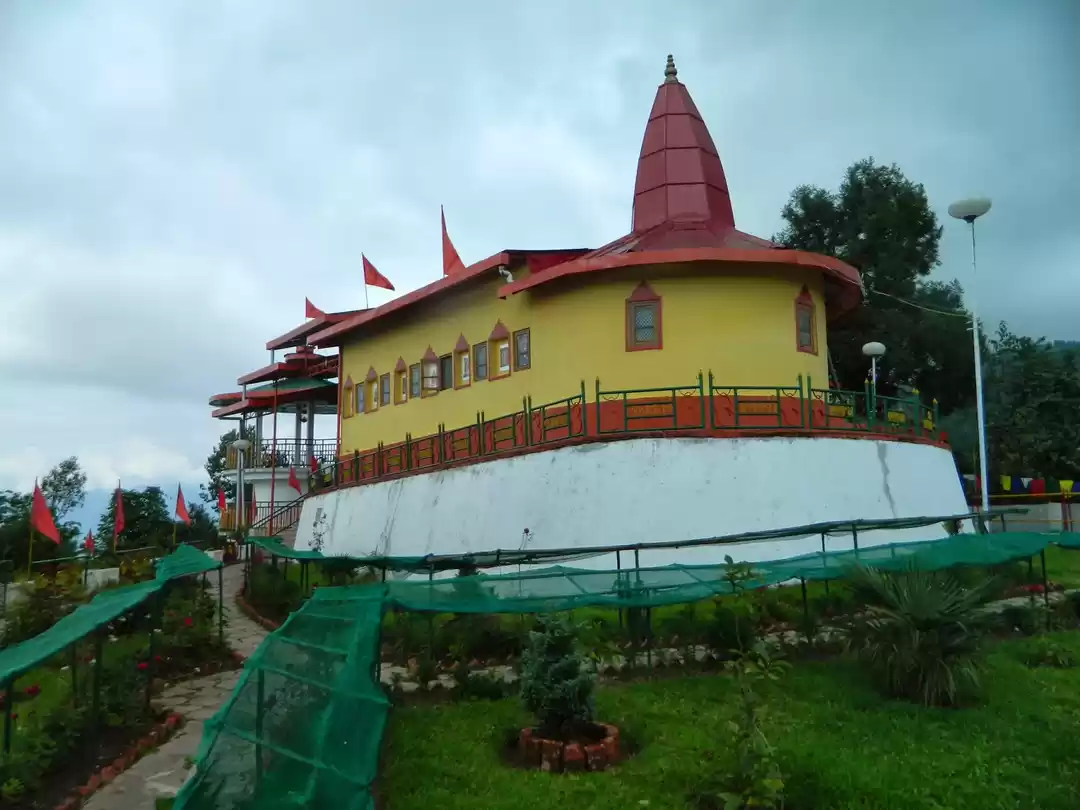
For ages, the Himalayas have been a beacon for those in search of the mystical. It’s a realm where the heavens seem just a whisper away—both in the towering peaks that scrape the clouds and in the spiritual heights reached by countless sacred sites. From mountains that brush the firmament to rivers that mirror the flow of the cosmos, every cave, temple, and monastery is steeped in reverence.
In the majestic ranges of Sikkim, every nook is a narrative, every cranny a chronicle, making the land a tapestry of tales worthy of reverence and awe.
Whispers of the divine echo through these hallowed spaces, where saints once tread, infusing the air with restorative grace. Here, a magical aura envelops all, a call to the soul to turn inward, to find sanctuary from the relentless pace of city life. These sanctuaries, touched by the sacred, offer solace and a glimpse into the profound depths of our being.
Following the footsteps of serenity seekers, our odyssey began in Gangtok, unfurling over a five-hour cab journey from the New Jalpaiguri Railway Station. The ideal seasons to embark on these spiritual adventures are from March to June and then again from mid-September to December, when the land itself seems to pause and breathe in the peace.
Our sojourn to Pelling from Gangtok was a canvas in motion, with Kewzing—a charming village cradled at the feet of Mt. Kabru—painting the backdrop. The journey was a scenic embrace, the road ascending gently as the Teesta River murmured tales in a frothy sea-green below. With each bend, the Border Roads Organisation silently pledged its vigil, ensuring our path remained a steadfast ally in our highland quest. So, without further ado, let’s dive right into the list of awe-inspiring monasteries in Sikkim you simply can’t miss.

1. Tashiding Monastery
Tashiding Monastery stands as a venerable beacon of faith in Sikkim, perched atop a hill where the Rangit and Rathong rivers whisper ancient secrets. Forty kilometers from Geyzing’s embrace, this sacred sanctuary dates back to 1717, its stones laid by the revered Ngadak Sempa Chembo.
It’s a place where time-honored charm infuses the air, drawing pilgrims from afar to bask in its spiritual aura and pursue enlightenment. Celebrated for the Bhumchhu festival, a jubilant water ceremony that marks the Tibetan New Year, Tashiding is more than a monument—it’s a journey of the soul, promising absolution for those who seek with a repentant heart.

2. Pemayangtse Monastery
In the mystical heights of the Himalayas, where the air whispers secrets of the divine, stands the Pemayangtse Monastery—a sanctuary envisioned by the revered Lhatsun. It is a haven for the ta-sang, the pure-hearted monks whose souls are as clear as the mountain skies.
Yet, it is not just the walls of Pemayangtse that echo with spirituality; it is the Zangdok Palri, a wondrous creation born from Lhatsun’s celestial visions. This three-dimensional marvel, crafted from wood and painted with the hues of heaven, is a testament to a city that exists beyond our realm—a city that Lhatsun glimpsed while in the throes of deep meditation.
Amidst the silence of the peaks, Lhatsun’s spirit danced with angels and wrestled with demons, earning him treasures not of this earth—gems and jewels of ethereal beauty. These he concealed within the earth’s embrace, in caves and grottoes, blessing them for his future selves to find.
Also Read: Planning a Trip to Sikkim This Season? Here’s the Only Guide You’ll Ever Need!
As fate would have it, Lhatsun’s written visions would one day unfurl before the eyes of Lingpyo Rimpoche, the master artist whose hands shaped the traditional masks of Sikkim. For three years, Rimpoche immersed himself in the vision, until at last, he brought forth the Zangdok Palri—a model city of divine splendor. Without a single nail, this wooden jewel box of a city shines with lacquer and lore, its every corner alive with deities and denizens, its palaces and domes a dreamscape of the enlightened.

3. Rabdentse Ruins
Rabdentse is a mystery shrouded in the veils of history. The palace, standing alone among ruins, whispers of a past where other buildings stood, now gone as if by magic, except for the enduring monastery. One can’t help but wonder, where have the sounds of its noble past gone? Sitting majestically on a hill, the ruins are divided into two worlds: the larger, surely the king’s residence, and the smaller, likely a once-thriving market, now a quiet courtyard of stone.
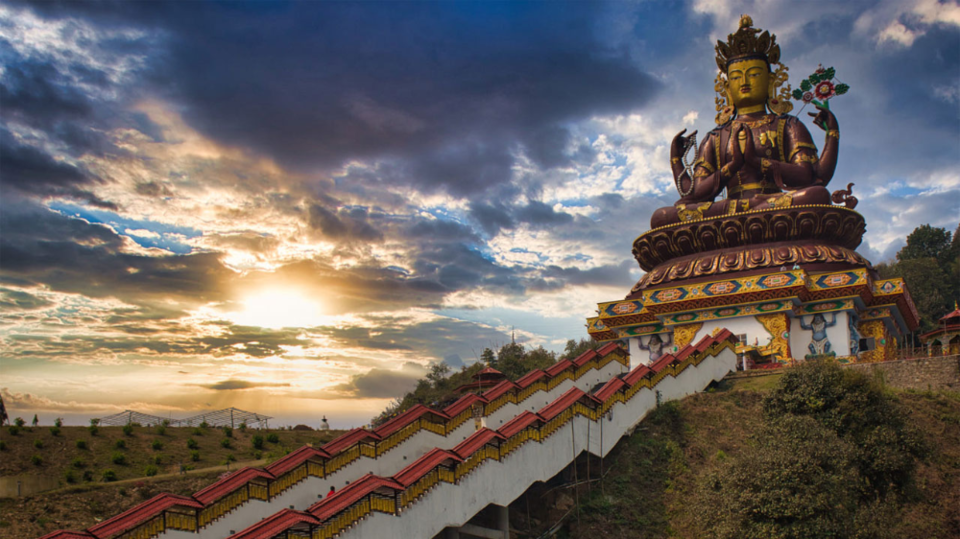
4. Sanga Choeling
In the shadow of the Himalayas, where the air whispers of legends, a path winds from Rabdentse to Pelling. This trail, steeped in the echoes of ancient footsteps, is not for the faint of heart. Yet, those who traverse it find camaraderie in the occasional lift from kindred spirits on wheels. But beware, for no vehicle will carry you to the mystical threshold of Sanga Choeling. This hallowed ground, veiled in the mists of time, beckons only the valiant to ascend its heights.
A 45-minute ascent rewards the pilgrim with the sight of Sang Choling Monastery, a bastion of Tibetan architectural splendor, cradling treasures from the 17th century. Within its walls, ancient paintings, relics, and clay sentinels stand as silent guardians of history. Founded in 1697 by the revered Lama Lhatsun Chempo, this sanctuary is a revered jewel in the heritage crown of Buddhism, believed to have once echoed with the sacred whispers of guhyamantra.
Here, against the canvas of the Great Himalayas, nature unveils her grandeur. Yet, the monastery’s inner sanctum remains a sanctified enigma, its doors open only to the men of Bhutia and Lepcha lineage. In the monastery’s shadow lies another testament to time—a 300-year-old crematorium, standing as a solemn reminder of the impermanence that governs all.

Nestled in the verdant folds of Sikkim, the Rumtek Monastery stands as a spiritual oasis, bridging the ancient and the contemporary. Its origins trace back to the 18th century, when the 12th Karmapa laid the foundation for a lineage that would flourish through the ages.
As the British influence seeped into Sikkim, 1889 marked the arrival of Claude White, heralding a new era of political dynamics. Chogyal Thutob Namgyal, the then-reigning monarch, navigated these changing tides, maintaining his sovereignty amidst the growing presence of foreign powers.
The year 1894 saw Gangtok’s elevation to the capital, transforming it into an administrative epicenter, a beacon of progress amidst the Himalayan expanse. It was here that the seeds of modernity were sown, setting the stage for a future where tradition and innovation converge.
The 1960s witnessed the resurrection of Rumtek Monastery. Under the auspices of the 16th Karmapa, Rangjung Rigpe Dorje, the new Dharma Chakra Centre rose from the ruins, its inauguration in 1966 marking a renaissance of spiritual and cultural significance.
The Sikkimese monarchy and the Indian government extended their patronage, fostering the monastery’s revival. Though Jawaharlal Nehru’s direct involvement is not documented, the collective support rendered Rumtek a bastion of Tibetan Buddhism, a confluence of history and spirituality that continues to inspire seekers from around the world.

So, are you ready to attain enlightenment and unveil your inner peace in these tranquil monasteries in Sikkim? Have you been to any of these monasteries yet? If yes, how was your experience? Share your journey to peace in the comments below!
You can also connect with me on Instagram & YouTube.
Ready to travel for free? Earn credits and redeem them on Tripoto’s weekend getaways, hotel stays and vacation packages!
Think we missed out on something? Tell us about it in the comments below. Or write about it here on Tripoto and earn Tripoto Credits!



